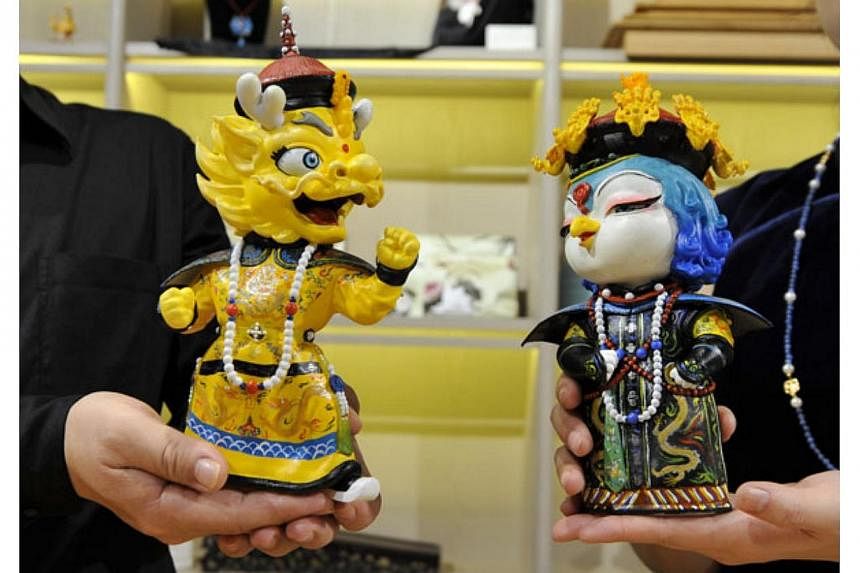BEIJING (China Daily/Asia News Network) - The 600-year-old Forbidden City is going cuddly and tapping into e-commerce to appeal to the younger generation.
On Sunday, the former symbol of imperial power which now houses the Palace Museum, introduced new mascots based on the traditional Chinese symbols of the dragon and the phoenix.
They are named Zhuangzhuang and Meimei, meaning "strong" and "beautiful" respectively in Chinese.
Feng Hui, head of the cultural service centre of the museum, said the museum will launch an online shopping mall featuring souvenirs and products like the two mascots on Jan 1, 2015.
Feng said the mascots, which took 10 months to develop, wear costumes from the Qing Dynasty (1644-1911) but the museum will introduce mascots dressed in costumes from other dynasties.
Other eye-catching products the museum has promoted include stereo earphones that look like a string of beads and jewels indicating the rank of officials during the Qing Dynasty.
"The museum is part of the civil service, which is presumed to be indifferent to customers' special needs," said Wu Dongwei, deputy general manager of Linkage Communication. "The image of the Palace Museum before was ancient, conservative, decent and perhaps boring, but now it is becoming very cute."
"People would never expect the museum to make such a change."
Home to 24 emperors of the Ming (1368-1644) and Qing dynasties, the 72-hectare Forbidden City was officially transformed into a sprawling museum in 1925, years after the fall of the last Qing emperor Puyi. It was named a Unesco World Heritage Site in 1987 and attracts some 15 million visitors a year.
According to Shan Jixiang, director of the Palace Museum, products inspired by elements of the museum's massive collection of 1.8 million items brought revenue of 600 million yuan (S$127.33 million) last year. He predicted the income this year will surpass 900 million yuan.
"In the past, the cultural products of the Forbidden City were basically about replicas of calligraphy and porcelain and just heavy books," said Shan during an interview with Xinhua News Agency.
"We worked very hard. And we have become more active. We have monitored the trend of new media and recruited more talent in this field.
Shan said that the museum has been thinking about how to communicate with people, and how to connect innovative minds and cultural heritage with people's practical needs and tastes.
"To persuade visitors to 'take the Palace Museum home', we have done everything we have to do," added Shan. "But we have all kinds of visitors, so we still have some difficulties meeting the diversified demand."
Shi Dingguo, a professor at Beijing Language and Culture University, said she thinks Shan is passionate about his work and has brought a lot of energy to the management team.
"Other museums should learn lessons from the Palace Museum," Shi said.

